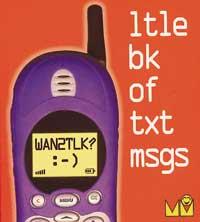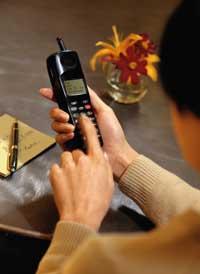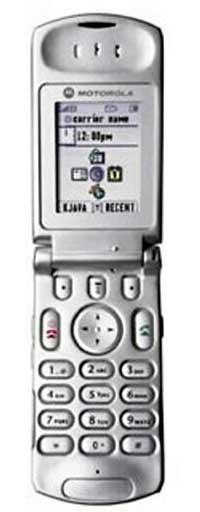Shaking thick fingers
2001/05/20 Mendiburu, Joana - Elhuyar Zientziaren Komunikazioa

A new language is being created with the new use of mobile phones, that of writing short messages (CM). Among us, for the moment, we see teenagers especially in this task, but the massive use of FRMs is a phenomenon that is spreading at great speed.
Asking a young man, we will soon know that if we want to write a FRM from a mobile phone, we will find the limit of 160 characters and if we send the message over the Internet, that limit drops to 120. A teenager from Tolosa or Orduña will surely not remember what they asked him in the study of the eve, but he does not have to make any effort to remember the numerous abbreviations that are used in this new language.
A teenager on his mobile HND? if he receives he knows “Do you want to speak?” they ask him, the more abbreviations, the faster and, above all, the cheaper. It grows in this new way of writing a whole new generation. The growth of this phenomenon is not a joke: it increases by 1,800% a year. Globally, ten billion messages are sent per month and email has also been left behind. According to some experts, this is the biggest increase in the letter industry since the postal stamp was invented.
The UK's best-selling Christmas fiction book WNT2TLK on FRM? Do you know? Want to talk?) It was a small and cheap brochure. 2 pounds in sterling (500 pesetas, 20 pounds) and its size does not exceed a large box of matches. In addition, specialized dictionaries adapted to the new language have begun to compete with each other and what was a curiosity is becoming a gigantic business.

The written messages produced by mobile have a decade of history. It was used only as a note of who initially had a voice message. In the late 1990s, teens started buying mobile phones. According to Eustat, 84% of Basque youth aged 15 to 24 now have a mobile phone. And it is no coincidence that this social segment is the main user; in addition to the features mentioned above (fast, cheap, anonymous), the culture of the FRM has another important character for a young man: he writes in a new code that his parents do not understand, with the privacy that gives him.
In this age range, the beginning of sentimental relationships is increasingly done through mobile, and new technologies can also act as palliative in the rupture. Before, relationships began and ended in face-to-face situations. Now, 13% of mobile owners recognize that they have used the CM system to end some kind of relationship, since "it is agile, easy and painless." The FRM system has also positively influenced some young people in developing their affective relationships, since many shy and introverted (especially boys) dare to make clearer and more direct manifestations when there are digital media.

But just as it has its advantages, this new way of writing has also generated concerns. For some ESO teachers, this new trend is causing enormous damage to creativity and, above all, to student writing. According to the teachers, the tendency to write everything in abbreviation has its reflection in the written works of the young, and, together with the impoverishment of the expression, has ever occurred the appearance of a ‘a bildu’ (@) in the works, or the opaque completion of kisses and love (XXXOOO) to his future boss.
In almost all schools it is forbidden to have mobile in class, but many students find ways to continue their constant communication during those school hours. "I make noise to the mobile and so I can continue receiving messages without disturbing and especially without the teacher realizing," says a young woman from ESO. 8 out of 10 young people of this age use FRMs to organize their social life.
What will everything be? In an environment that changes so fast no one can know, but better if we all go back to student times and start learning something about the new language...
Symbols to express your mood.
When sending messages via mobile or Internet it is not possible to indicate your mood. Symbols such as good mood, despair, anger, etc. are used to do this. express. To understand them you must look with your head tilted, with the symbol of the left at the top.
:-) Happy face. | 8-) With glasses to express joy. |
;-) or ;) Wink. After a joke... | :-) Devils after malicious statements. |
:-( or:( to express sadness or disappointment. | 0:-) Angel in loving manifestations. |
:-P Pulling out the tongue, mocking or mocking. | :-\ I don't know, I'm not sure. |
:-] I am very satisfied. | :-S I don't know what to say... |
:-[ I am very sad. | Or you surprised me. |
:-@ Uuaa! News Cry. |
Published in 7k.

Gai honi buruzko eduki gehiago
Elhuyarrek garatutako teknologia






